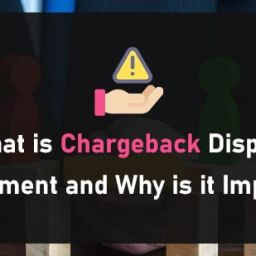
Concept of Chargebacks
Chargebacks serve as a vital consumer protection mechanism, enabling customers to contest a charge on their credit card. These disputes can arise from a variety of circumstances, such as fraudulent activity, dissatisfaction with a service or product, or billing mistakes. When a chargeback is initiated, the merchant not only loses the transaction amount but also faces additional costs, which underscores the importance of efficient dispute management.
Having a solid grasp of how chargebacks work is essential for any business aiming to minimize their occurrence. Essentially, a chargeback process begins when a customer contacts their credit card issuer to dispute a transaction. The card issuer then reviews the claim and, if valid, reverses the transaction. The merchant is notified and given the chance to respond with evidence to counter the claim.
Understanding the procedural details and potential outcomes of chargebacks can help businesses better navigate this complex issue. Familiarity with the various stages of the chargeback cycle, from initial dispute to resolution, can empower merchants to act swiftly and efficiently. Recognizing the role of different stakeholders—such as payment processors, acquiring banks, and card networks—also aids in understanding the larger ecosystem in which chargebacks occur.
Education and training on the intricacies of chargebacks can greatly enhance a business’s ability to handle these disputes. This includes knowing the common reasons for chargebacks and the specific documentation required to challenge them successfully. Proactive measures, such as maintaining detailed transaction records and adhering to industry best practices, can also play a significant role in preventing disputes.
By thoroughly understanding the concept and mechanics of chargebacks, businesses can develop strategies to manage and reduce these incidents, ultimately protecting their revenue and maintaining customer trust.
Some Related Blogs
- Top Fraud Prevention Solutions for High-Risk Merchants
- How to Implement a Robust Fraud Prevention System
- Impact of AI in Fraud Prevention for Online Retailers
- Fraud Prevention Best Practices Every Merchant Should Know
Spotting Typical Causes
Common reasons for chargebacks encompass unauthorized transactions, products not delivered as promised, recurring billing issues, and technical errors during payment processing. By examining previous disputes, businesses can identify patterns that suggest underlying problems. For instance, an increase in chargebacks due to non-delivery might highlight logistical challenges. Pinpointing these patterns allows for targeted improvements, reducing the likelihood of future disputes.
Another typical cause of chargebacks is dissatisfaction with a product or service. Customers may file a dispute if the item they received doesn’t match its description or fails to meet their expectations. This can often be mitigated by providing clear, accurate product descriptions and setting realistic expectations.
Technical issues during the payment process can also trigger chargebacks. Errors such as duplicate transactions, incorrect amounts, or payment gateway malfunctions can frustrate customers and lead to disputes. Ensuring that your payment system is robust and frequently tested can help avoid these technical pitfalls.
Recurring billing issues are another area to watch. Customers may not recognize charges for subscriptions or recurring services, leading them to dispute the transaction. Clear communication about billing cycles and providing easy ways to manage subscriptions can help mitigate this risk.
Lastly, fraudulent activity is a significant contributor to chargebacks. This can include stolen credit card information used for unauthorized purchases. Investing in advanced fraud detection tools and maintaining rigorous security protocols can help protect your business from these types of disputes.
Improving Customer Service
Effective customer service is essential in minimizing chargebacks. Providing customers with clear information about your products, services, and policies can significantly reduce misunderstandings that lead to disputes. Ensure your website and other customer-facing platforms offer comprehensive, easy-to-find details on product specifications, pricing, and return policies.
Being proactive in handling customer complaints is crucial. Train your staff to respond promptly and empathetically to issues raised by customers. An effective customer service team can often resolve disputes before they escalate, providing solutions that satisfy the customer and maintain their trust in your brand.
Another important aspect is offering multiple channels for customer support. Make sure customers can reach out via phone, email, live chat, or social media. Quick and efficient communication helps in addressing concerns in real time, making it less likely for customers to initiate chargebacks.
Additionally, follow up with customers after a purchase to confirm their satisfaction. A simple email or phone call to check if the product met their expectations can go a long way in building a positive relationship and deterring potential disputes.
![]()
Email us anytime!
Email customer service 24/7
![]()
Call us anytime!
Reach customer care 24/7 at +1 (888) 901-8653
Make sure your return process is straightforward. Complicated or slow return procedures can frustrate customers and push them to seek a chargeback. By making returns and refunds easy, you provide a better customer experience and reduce the chance of disputes.
Lastly, maintain detailed records of all customer interactions. Documentation can be invaluable when responding to chargeback claims, providing evidence to support your case. By implementing these strategies, businesses can foster a better customer relationship, reducing the risk of chargebacks and enhancing overall satisfaction.
Deploying Fraud Prevention Tools
Leveraging modern technology to combat fraudulent transactions is essential for safeguarding your business and customers. Advanced fraud detection systems, equipped with machine learning algorithms, can analyze vast amounts of data to identify unusual patterns and behaviors. By monitoring transaction history, geolocation data, and device information, these systems can effectively flag potential fraud.
Two-factor authentication (2FA) is another crucial measure. By requiring a secondary form of verification, such as a code sent to a mobile device, businesses can add an extra layer of security. Similarly, address verification services (AVS) can confirm the billing address provided by the customer matches the one on file with the credit card issuer, further deterring unauthorized transactions.
Tokenization and encryption are also vital in protecting sensitive information. Tokenization replaces credit card details with a unique identifier or “token” that cannot be used outside the transaction context, while encryption ensures data is securely transmitted and stored. These methods prevent data breaches and reduce the risk of chargebacks stemming from stolen information.
Real-time transaction monitoring allows businesses to detect and respond to suspicious activities as they occur. By setting up alerts for specific triggers, such as high-value purchases or multiple transactions in quick succession, businesses can intervene promptly to prevent fraud.
Education and training for staff on recognizing and handling fraudulent activities can enhance the effectiveness of these tools. Ensuring employees are aware of the latest fraud tactics and how to respond appropriately can help protect your business.
By integrating these technologies and practices, businesses can significantly reduce the occurrence of fraud-related chargebacks, thereby protecting their revenue and enhancing customer trust.





